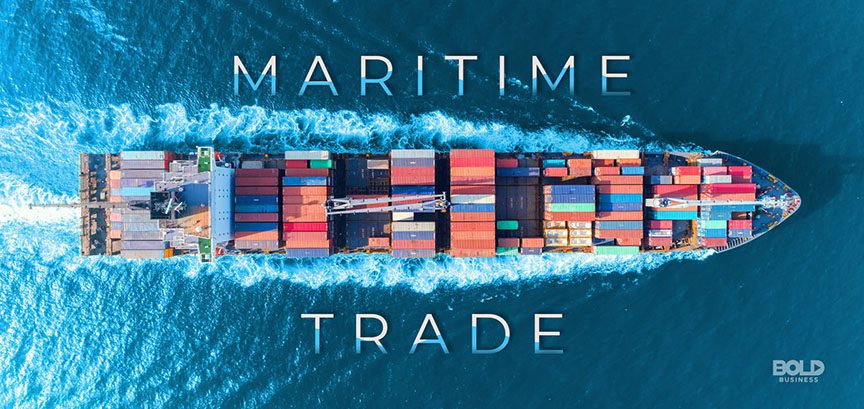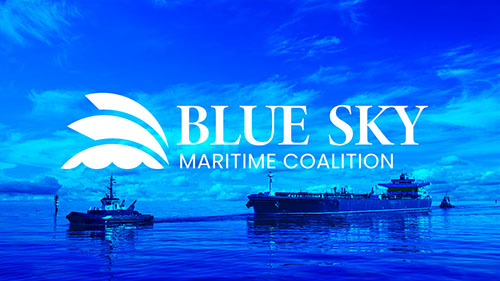1. Port and Terminal Information
1.1 Daesan Port (34°44’N, 126°25’E) is a major industrial port in South Korea under Korea Port Authority (KPA) jurisdiction, handling petrochemicals (60% of traffic), LNG (25%), and general cargo (15%) based on 2023 KPA statistics.
1.2 Terminal specifications (KPA Port Handbook 2024 Edition):
– Daesan Petrochemical Terminal:
• Berth 1: LOA 300m/draft 15m (max beam 48m)
• Berth 2: LOA 280m/draft 14m (max beam 45m)
• 4 loading arms per berth (max rate 3,000m³/hr, working pressure 10 bar)
– Daesan LNG Terminal:
• Single berth: LOA 320m/draft 16m (tidal window ±2hr from HW)
• 2 LNG loading arms (max transfer rate 12,000m³/hr)
– General Cargo Terminal:
• Berths 3-5: LOA 200m/draft 12m
• Deck strength: 15T/m² (uniform load), 25T/m² (concentrated load)
1.3 Mooring requirements (OCIMF MEG4 compliant):
– Minimum 8 headlines/4 breastlines/4 sternlines for vessels >200m LOA
– Synthetic ropes prohibited at petrochemical berths
1.4 New additions:
– Bunkering Terminal (Pier 7):
• LOA 180m/draft 10m
• Simultaneous ops allowed with safety zone of 50m
– Night navigation:
• Restricted for vessels >250m LOA (requires special permission)
2. Navigation and Pilotage
2.1 Pilotage (KPA Navigation Rule Art.12 amended 2023):
– Mandatory for all vessels >500 GT
– Boarding position: 34°45’N, 126°20’E (1.5nm SW of breakwater)
– Transfer conditions:
• Max wave height 2.5m
• Daytime only for vessels >290m LOA
2.2 Channel data (KPA Hydrographic Survey 2024):
– Main channel: 16m CD (dredged to 17.5m at HW springs)
– Turning basin: 500m diameter at 15m depth
– Under-keel clearance must exceed:
• 10% of draft in fair weather
• 15% of draft during NE monsoon (Nov-Mar)
2.3 VTS requirements:
– Initial report at 12nm out (VHF Ch 12/16)
– Mandatory AIS transmission throughout port stay
– Speed limits:
• 8 knots within port limits
• 5 knots within 500m of LNG terminal
2.4 New additions:
– Radar coverage:
• Primary radar: 24nm range (X-band)
• Secondary radar: 12nm range (S-band)
– Emergency channels:
• Ch 06 (ship-to-ship)
• Ch 14 (port operations)
3. Anchorage Areas
3.1 Designated anchorages (KPA Anchorage Ordinance No.5 revised 2024):
– No.1 Anchorage (34°43’N, 126°18’E):
• Depth: 20m
• Bottom: Soft mud (holding coefficient 1.5)
• Max vessels: 3 (min spacing 500m)
– No.2 Anchorage (34°40’N, 126°22’E):
• Depth: 25m
• Bottom: Sand (holding coefficient 2.0)
• Reserved for vessels >200m LOA
3.2 Anchoring procedures:
– Minimum scope:
• 7:1 in normal conditions
• 10:1 during typhoon alerts
– Anchor watch requirements:
• Continuous GPS monitoring
• Position checks every 15 minutes
3.3 New additions:
– Emergency anchorage (34°42’N, 126°19’E):
• Depth: 18m
• For use during mechanical failures only
– Anchorage fees:
• 0.15 USD/GT per day (KPA Tariff No.2024-3)
4. Cargo Operations
4.1 Petrochemical terminals (ISGOTT 6th Ed. + KPA Supplement 2023):
– Pre-arrival requirements:
• Gas-free certificate (<1% LEL) valid for 6 hours
• Last cargo details (3 previous loads)
– Operational controls:
• Static bonding: Resistance <10 ohms verified hourly
• Tank atmosphere monitoring every 30 minutes
• Maximum loading rate adjustment based on temperature:
› 20-30°C: 100% rate
› 30-40°C: 75% rate
› >40°C: Operations suspended
4.2 LNG carriers (SIGTTO “LNG Port Safety Standards” 2023):
– Standby requirements:
• Main engine on 30 minutes notice
• Emergency towing wires rigged
– Safety zones:
• 500m exclusion zone during transfer
• 200m security zone at all times
4.3 Bulk cargo operations (BC Code 2022):
– Hatch cover testing:
• 1.25x intended load pressure test
• Ultrasonic thickness measurements annually
– Dust control:
• Water spray at 10L/m²/min
• Wind speed monitoring (ops stop >15m/s)
4.4 New additions:
– Container operations:
• Max stack weight: 120T per 20′ slot
• Lashing bridges must meet CSS Code
– Dangerous goods:
• IMDG Class 1 explosives prohibited
• Class 7 radioactive requires 72hr notice
5. Safety Regulations
5.1 ISPS Compliance (KPA Security Directive 2024-1):
– Pre-arrival documentation:
• 96hr advance notice for HI-SEC vessels
• Crew list with passport numbers
– Security measures:
• Roving patrols every 2 hours
• Night vision cameras on all berths
5.2 Emergency equipment:
– Firefighting:
• Minimum 2 SCBA sets (+2 for every 10 crew)
• International Shore Connection ready
– Spill response:
• 200L spill kit minimum
• 50m containment boom for vessels >10,000GT
5.3 New additions:
– Gangway safety:
• Max angle 30 degrees
• Netting required if >2m above water
– Enclosed space entry:
• Continuous ventilation during operations
• Rescue harnesses mandatory
6. Environmental Compliance
6.1 Waste management (MARPOL Special Area status):
– Prohibited discharges:
• Oily water (Annex I)
• Sewage (Annex IV within 12nm)
• Garbage (Annex V within 25nm)
– Reception facilities:
• Oily waste: Pier 6 (24hr service)
• Food waste: Separate collection required
6.2 Air emissions (KPA Clean Air Policy 2024):
– Fuel sulfur limits:
• 0.1% at berth
• 0.5% within ECA
– VOC recovery:
• 98% efficiency for benzene
• 90% for other petrochemicals
6.3 New additions:
– Ballast water:
• D-2 standard enforced
• Sampling may be conducted
– Underwater noise:
• Restricted piling operations 2000-0800
7. Local Regulations
7.1 Crew management:
– Shore leave:
• Biometric ID cards issued at gangway
• Curfew 0000-0500 for crew
– Health protocols:
• Drug tests with 0.00% tolerance
• Mandatory TB screening for crews from high-risk areas
7.2 Operational restrictions:
– Drones: 5km no-fly zone
– Photography: Terminal areas prohibited
7.3 New additions:
– Customs:
• Ship’s stores declaration within 1hr of arrival
• Alcohol allowance 1L per crew member
– Immigration:
• Seaman’s book must have 6 months validity
8. Weather Considerations
8.1 Typhoon procedures (KPA Typhoon Manual 2024):
– Alert stages:
• Stage 1 (winds >15m/s): Double mooring lines
• Stage 2 (winds >20m/s): Suspend cargo ops
• Stage 3 (winds >25m/s): Vessels must depart
– Gangway policy:
• Lift when swell >1.5m
• Remove when wind >12m/s
8.2 Winter operations:
– Deck safety:
• Heated pathways required below -5°C
• Non-slip coatings mandatory Nov-Mar
– Cargo handling:
• Steam tracing for viscous cargoes
• Minimum temperature for palm oil: +10°C
8.3 New additions:
– Fog procedures:
• Horn signals every 2 minutes
• Radar-assisted berthing only
– Current data:
• Max flood: 2.8 knots
• Max ebb: 3.2 knots
9. Port Services
9.1 Bunkering (KPA Bunker Quality Assurance Program):
– Grades available:
• IFO 380cSt (max sulfur 0.5%)
• MGO (ISO 8217:2017 compliant)
– Delivery rates:
• 200m³/hr for IFO
• 100m³/hr for MGO
9.2 Provisions:
– Delivery lead time: 24hr for standard orders
– Medical supplies: Pharmacy within port area
9.3 New additions:
– Waste services:
• Sludge disposal: Gunsan Port only
• Medical waste: Incineration available
– Repair services:
• Hull cleaning permitted
• Hot work requires permit
10. Important Contacts
10.1 Operational contacts (KPA Official Directory 2024):
– Port Control: VHF Ch 12/16 (24hr English)
– Pilot Station: +82-41-XXX-XXXX (confidential)
– Coast Guard: VHF Ch 16 / +82-122
10.2 Emergency services:
– Medical: Port clinic +82-41-XXX-XXXX
– Spill response: KPA Oil Spill Center +82-41-XXX-XXXX
10.3 Online resources:
– Port Authority: www.kpa.or.kr/eng
– Tide tables: www.khoa.go.kr/eng
11. Additional Critical Information
11.1 Tidal data (KHO 2024):
– Highest astronomical tide: +3.8m CD
– Lowest astronomical tide: -0.3m CD
– Mean tidal range: 3.5m
11.2 Air draft restrictions:
– LNG terminal: 45m (power lines)
– Main channel: 50m (bridge clearance)
11.3 Cyber security:
– Mandatory measures:
• USB port blocking
• ECDIS verification pre-arrival
– Reporting requirements:
• Cyber incidents within 1hr





